Abstract
Six homing pigeons were trained on a variety of concurrent variable-interval schedules in a switching-key procedure. Unlike previous work, reinforcer ratios of up to 160 to 1 and concurrent extinction variable-interval schedules were arranged in order to investigate choice when reinforcer-frequency outcomes were extremely different. The data obtained over 11 conditions were initially analyzed according to the generalized matching law, which fitted the data well. The generalized matching law was then fitted only to conditions in which the reinforcer ratios were between 1 to 10 and 10 to 1. The deviations of choice measures from the other four more extreme reinforcer-ratio conditions were significantly more towards equal choice than predicted by this second generalized matching fit. A contingency-discriminability model, which predicts such deviations, described the data more effectively than did the generalized matching law, and also correctly predicted the maintenance of responding on both alternatives when one was associated with extinction.
Keywords: concurrent variable-interval schedules, choice, generalized matching, contingency-discriminability model, reinforcer sensitivity, key peck, pigeons
Full text
PDF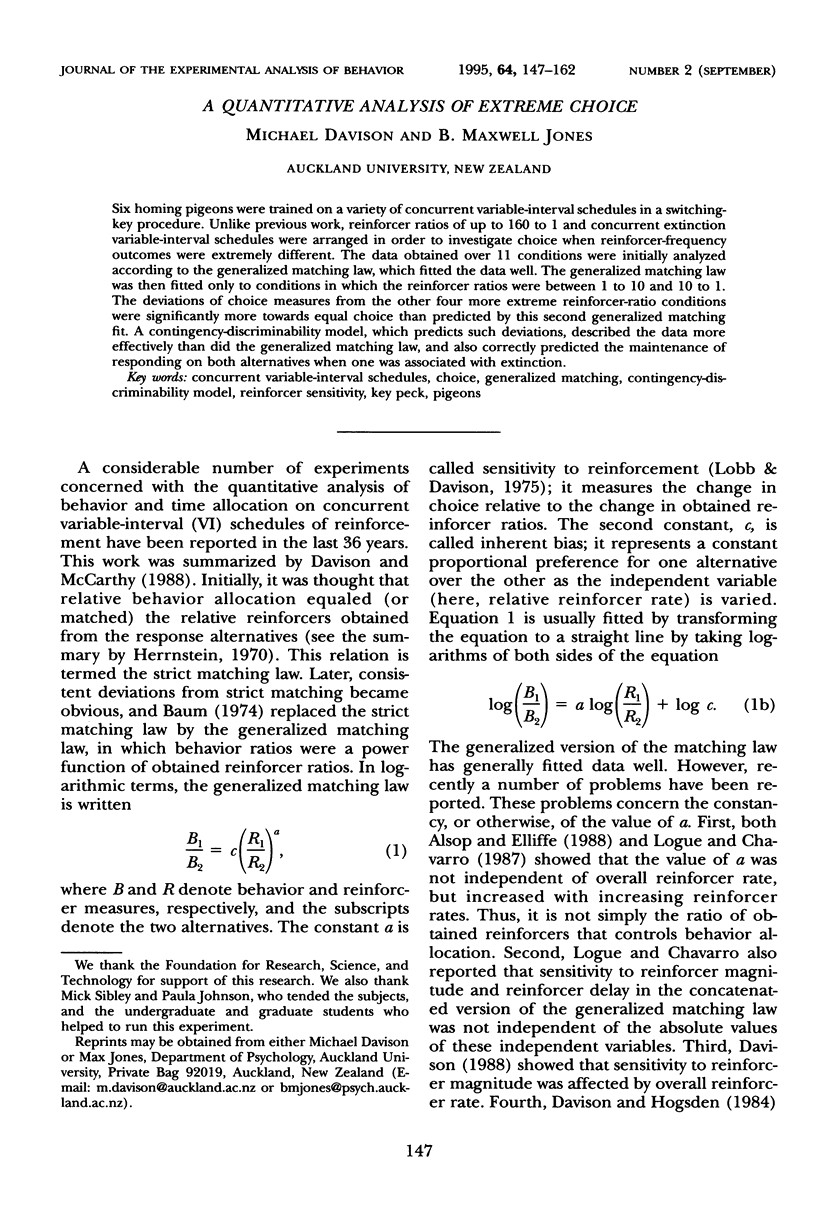
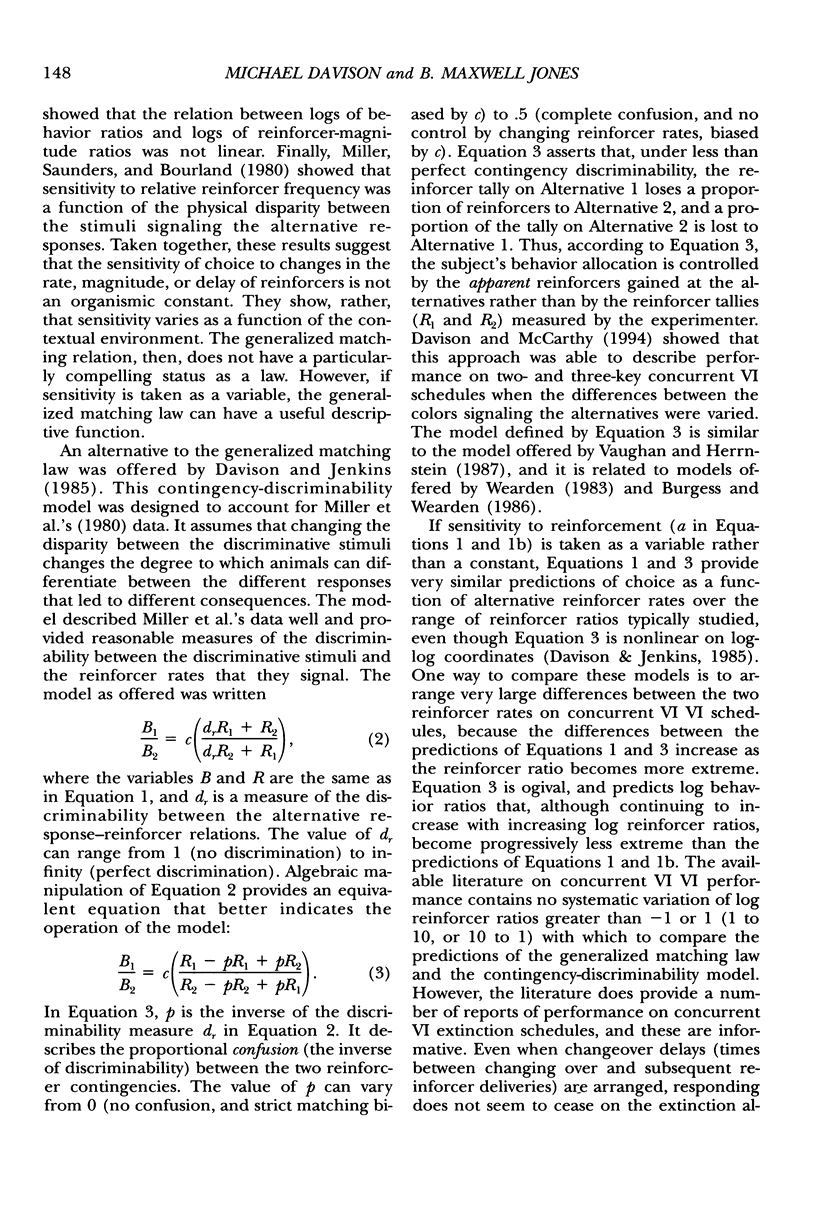
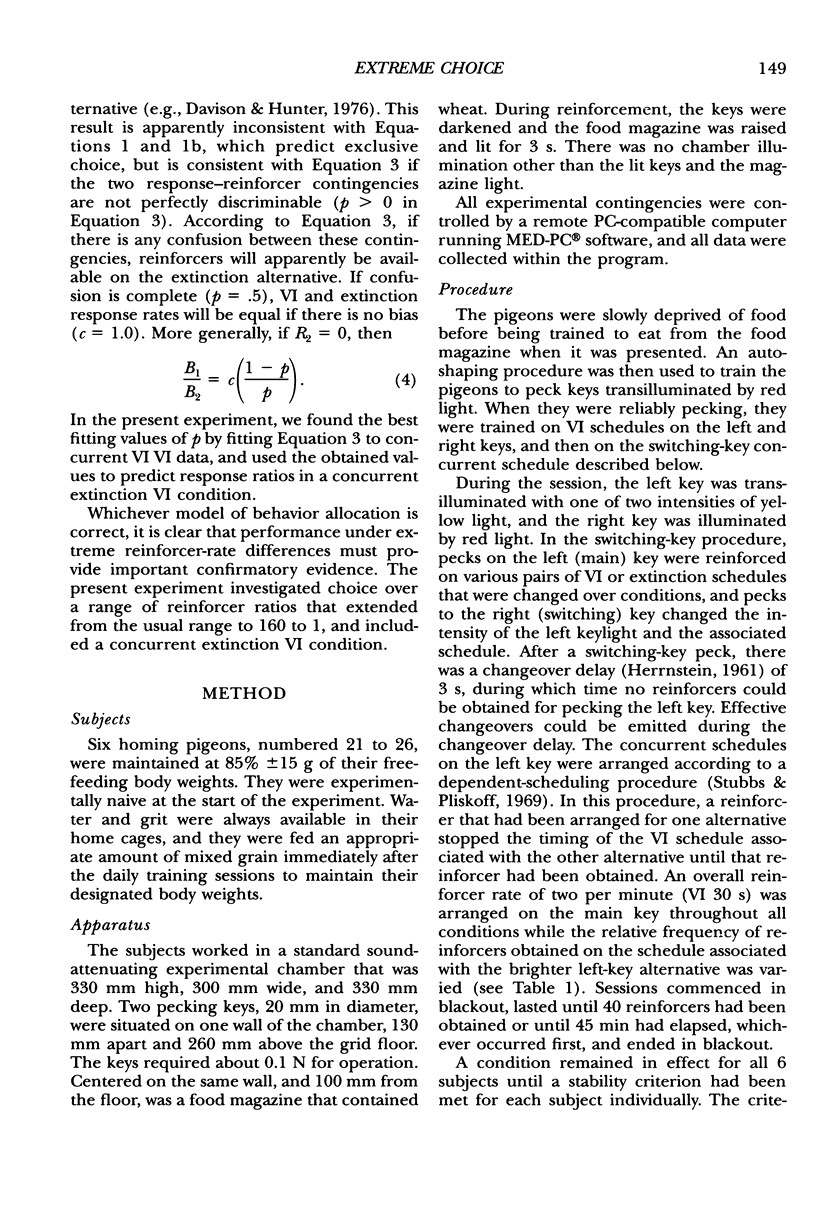
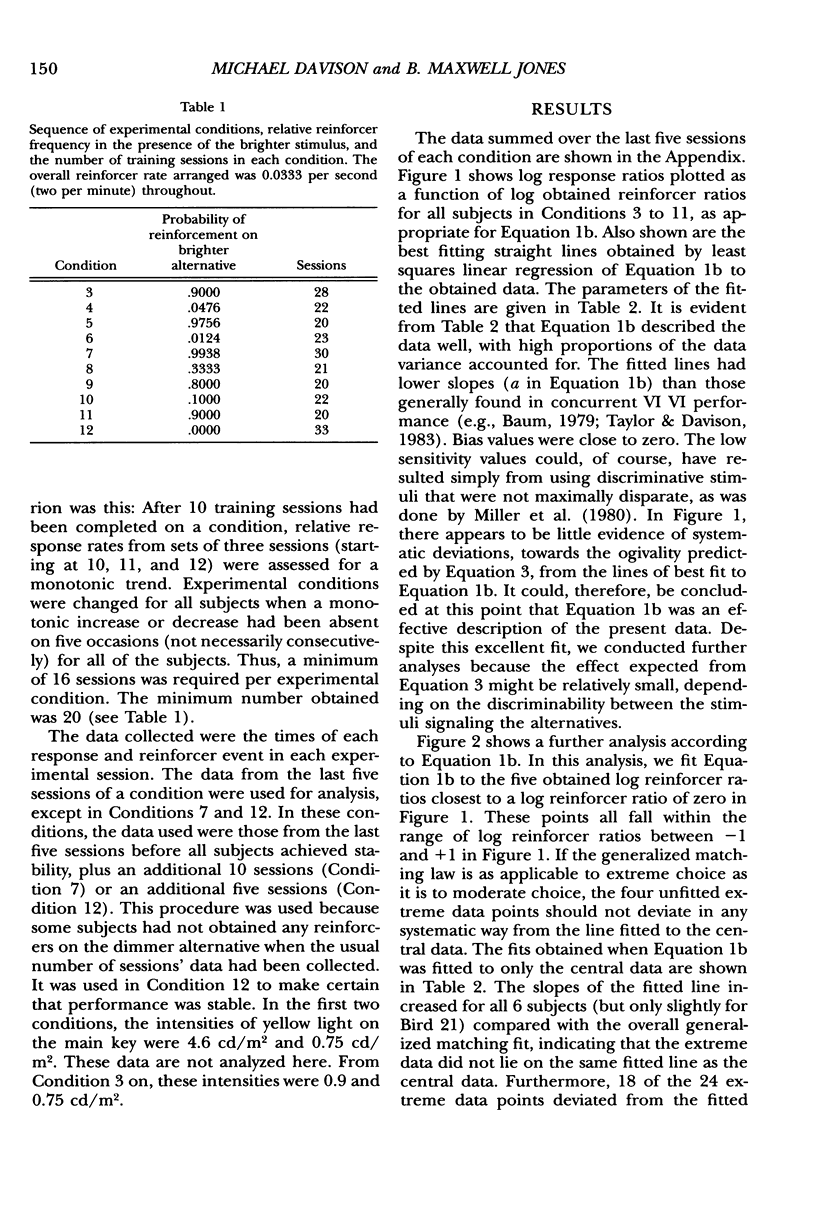
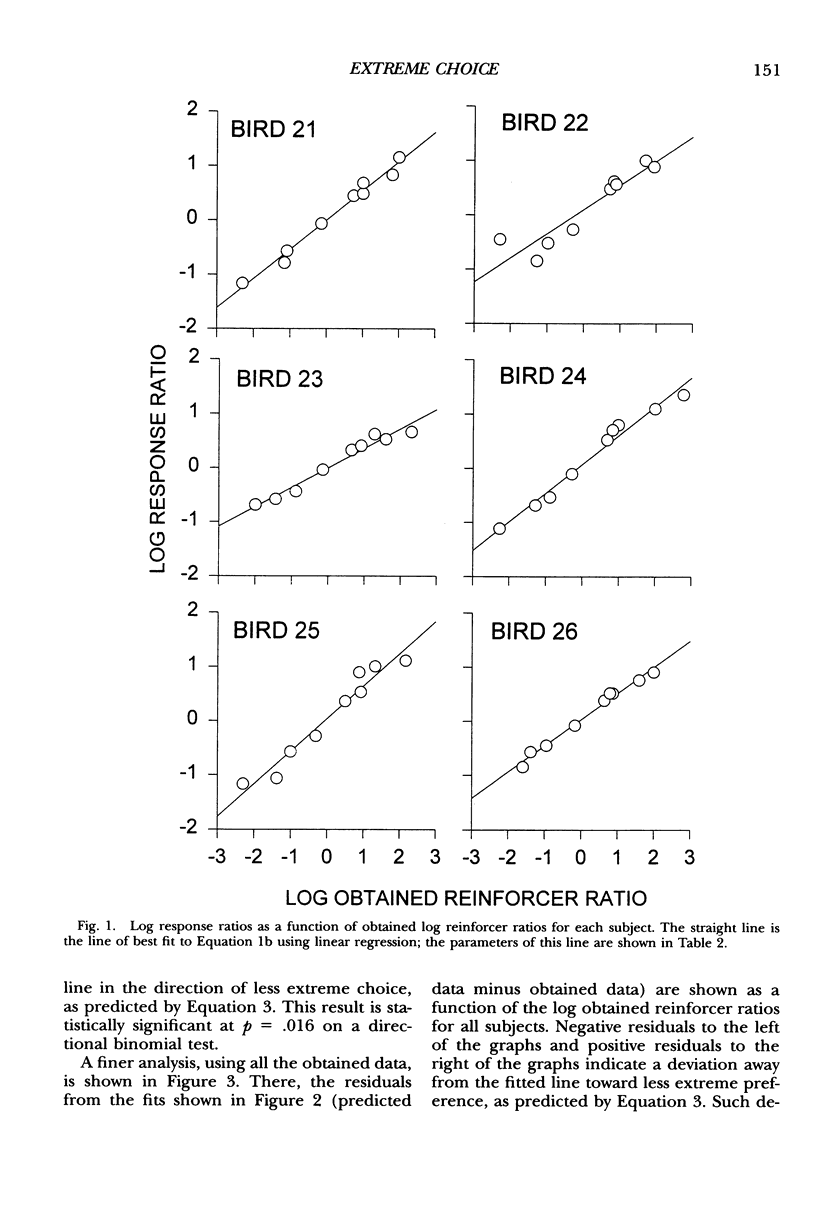
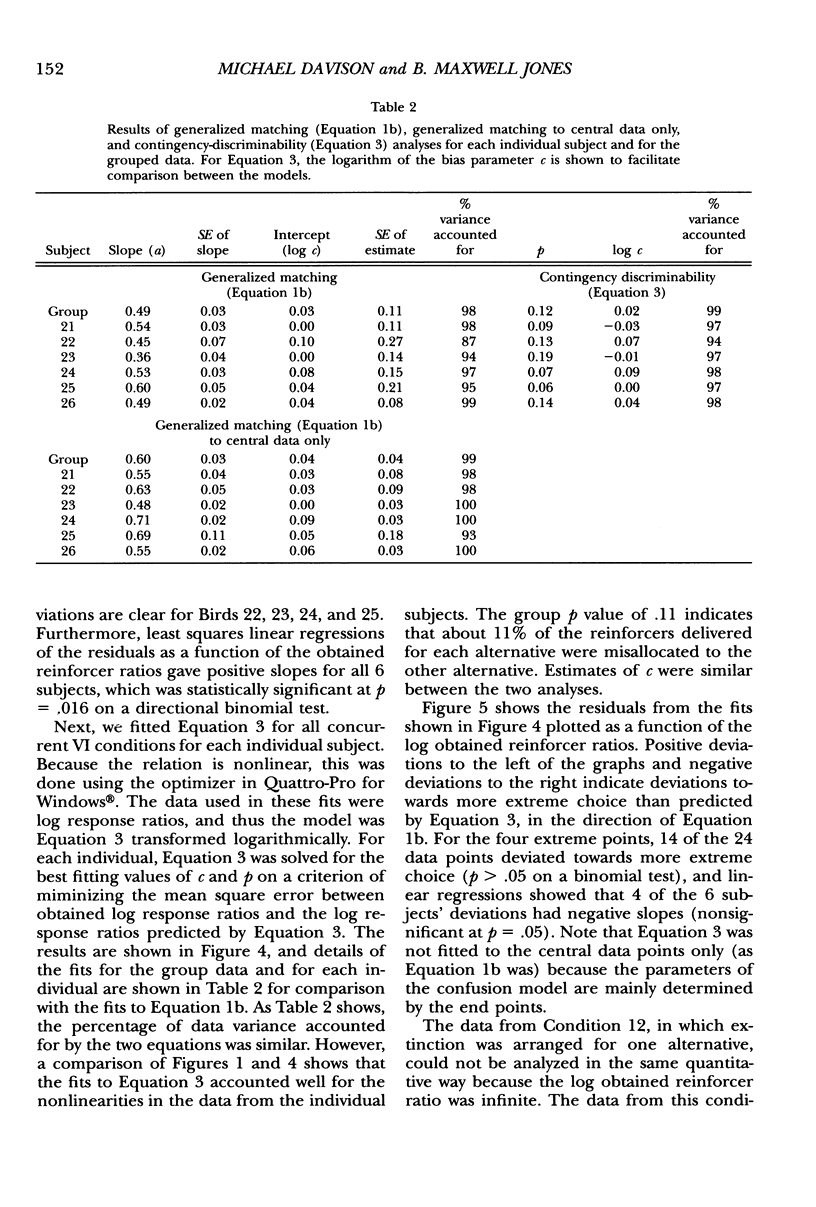
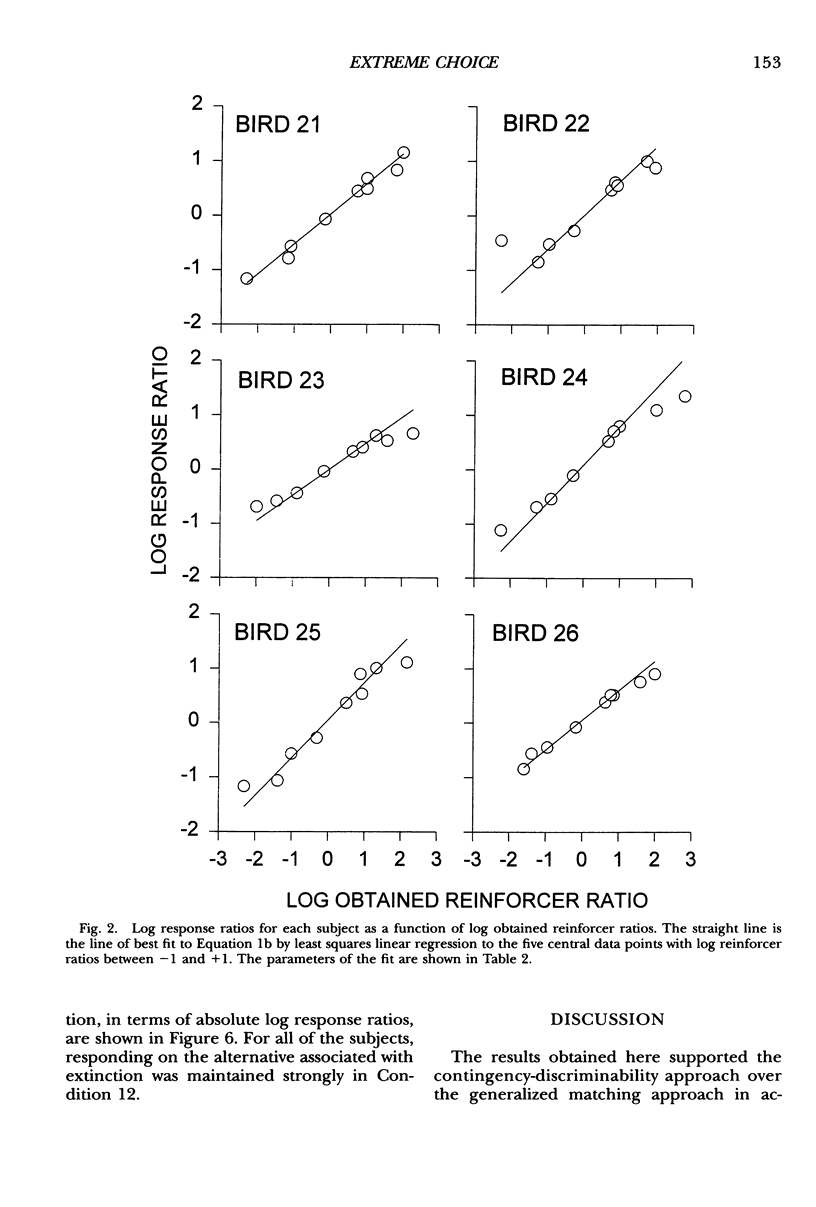
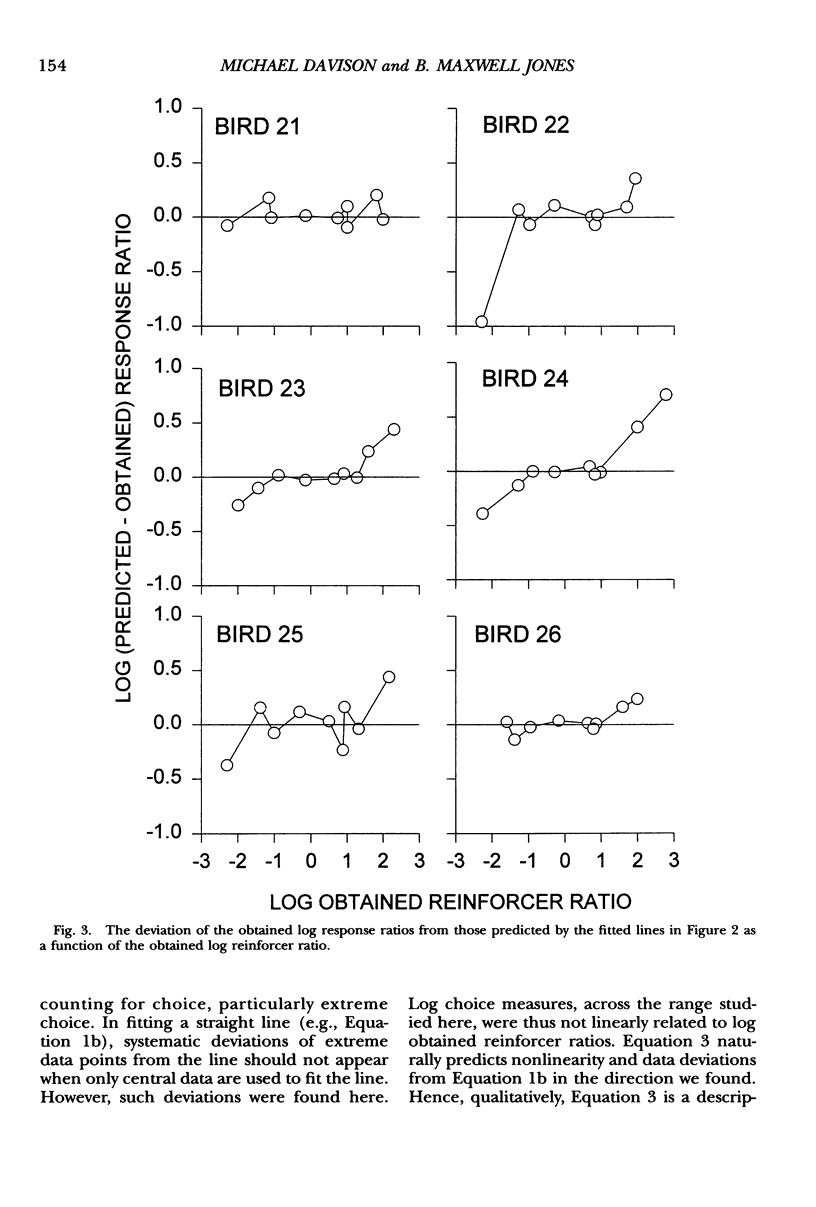
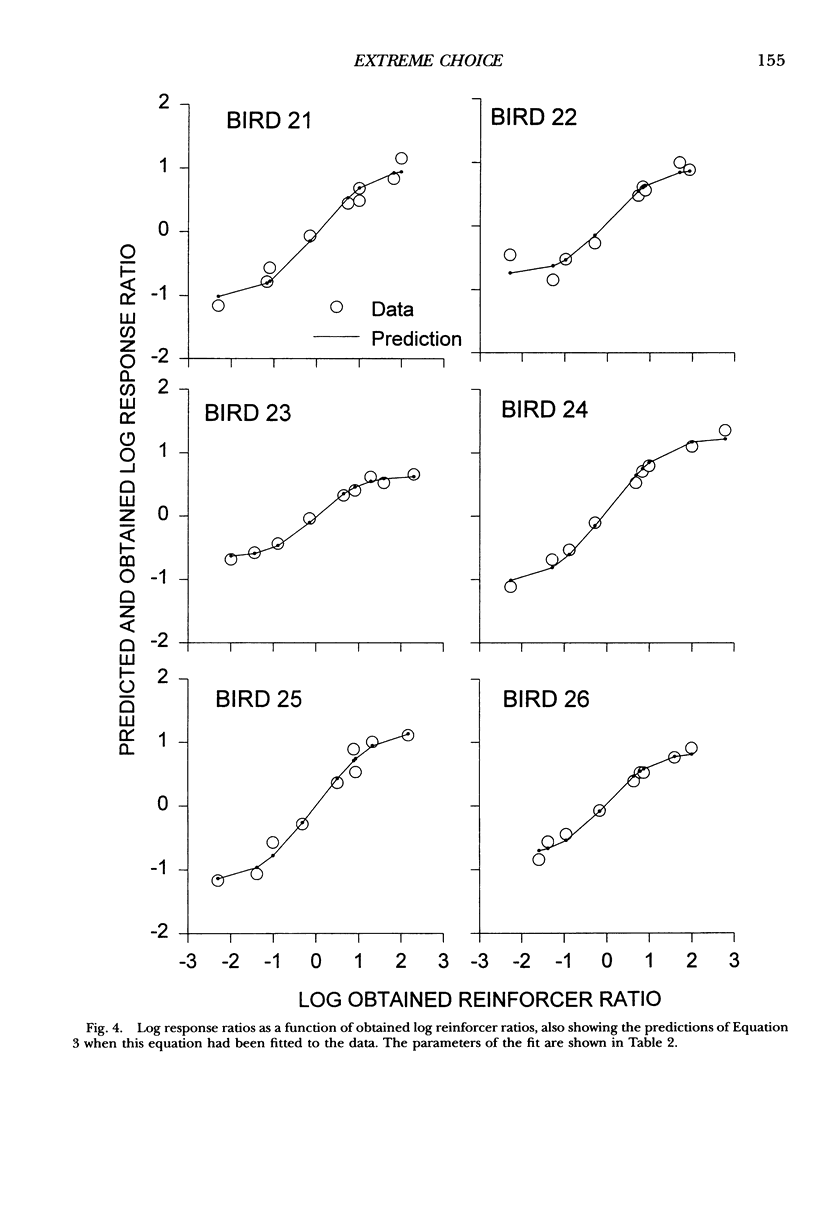
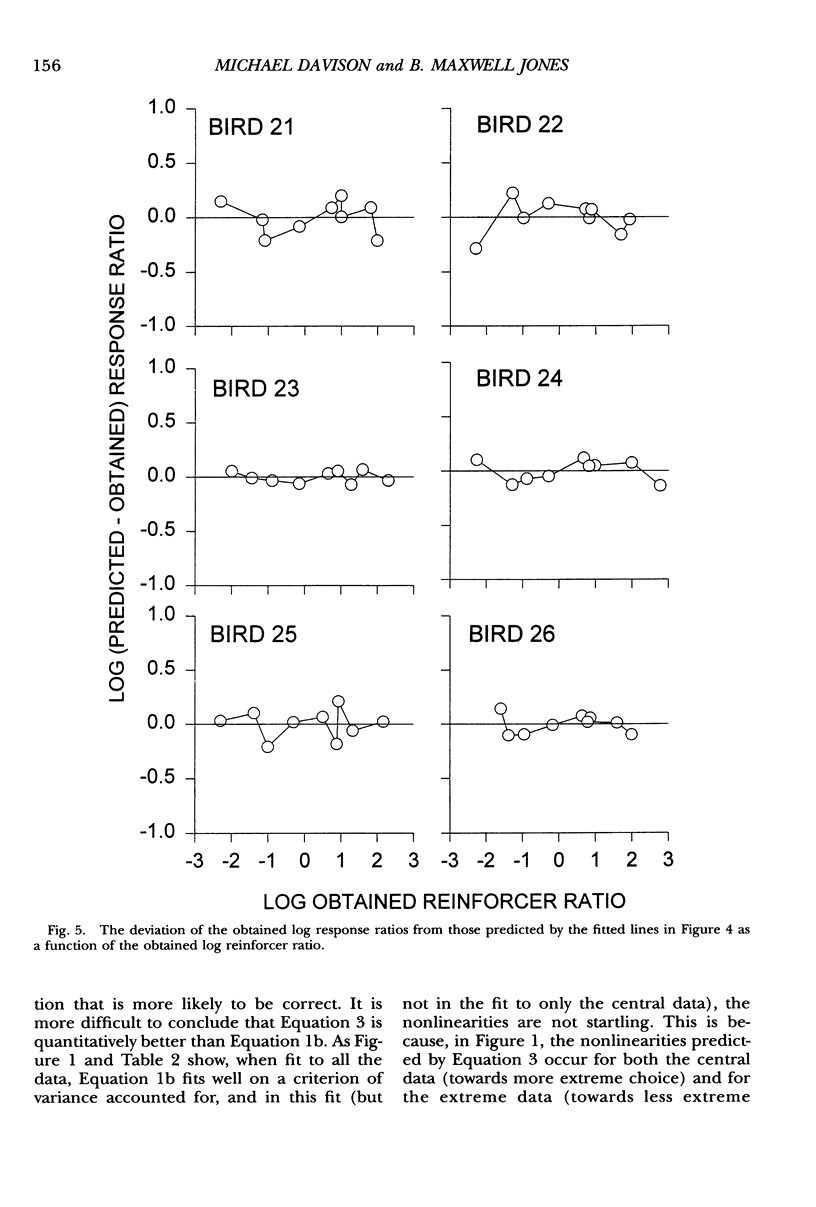
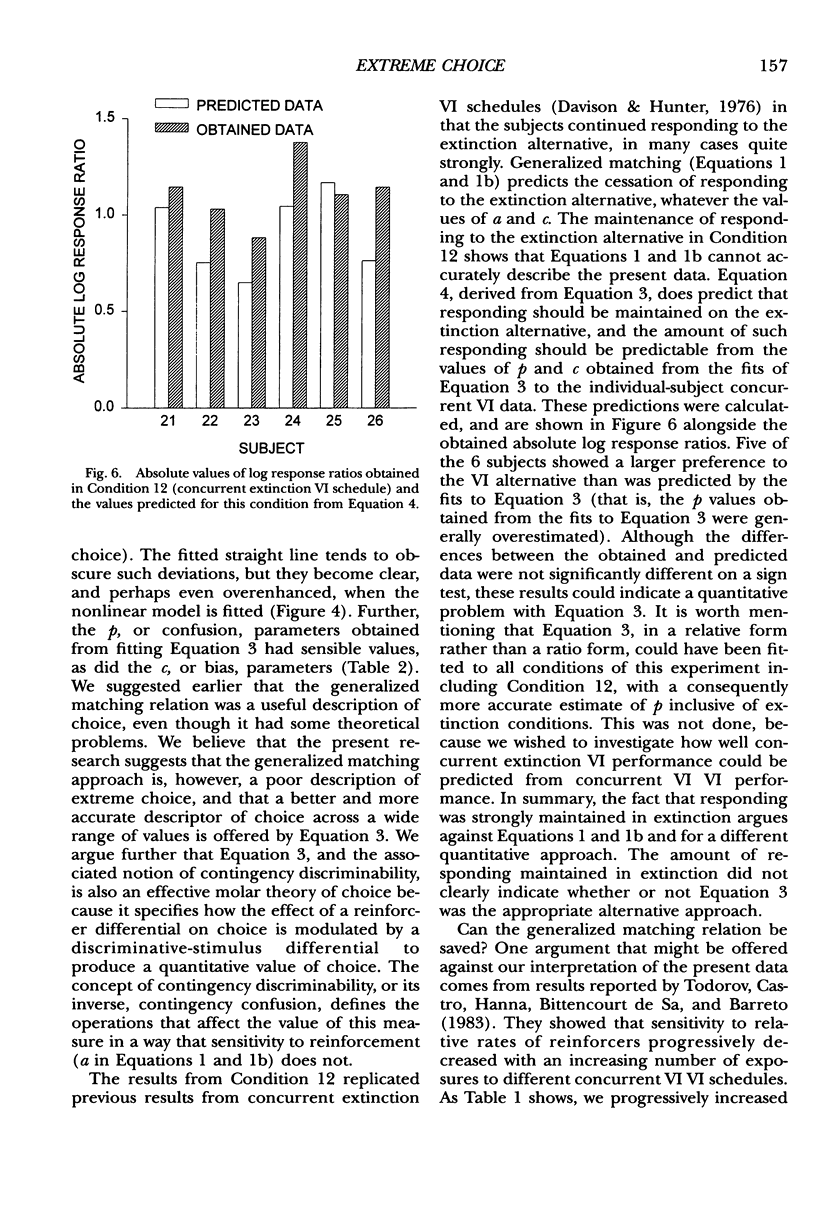
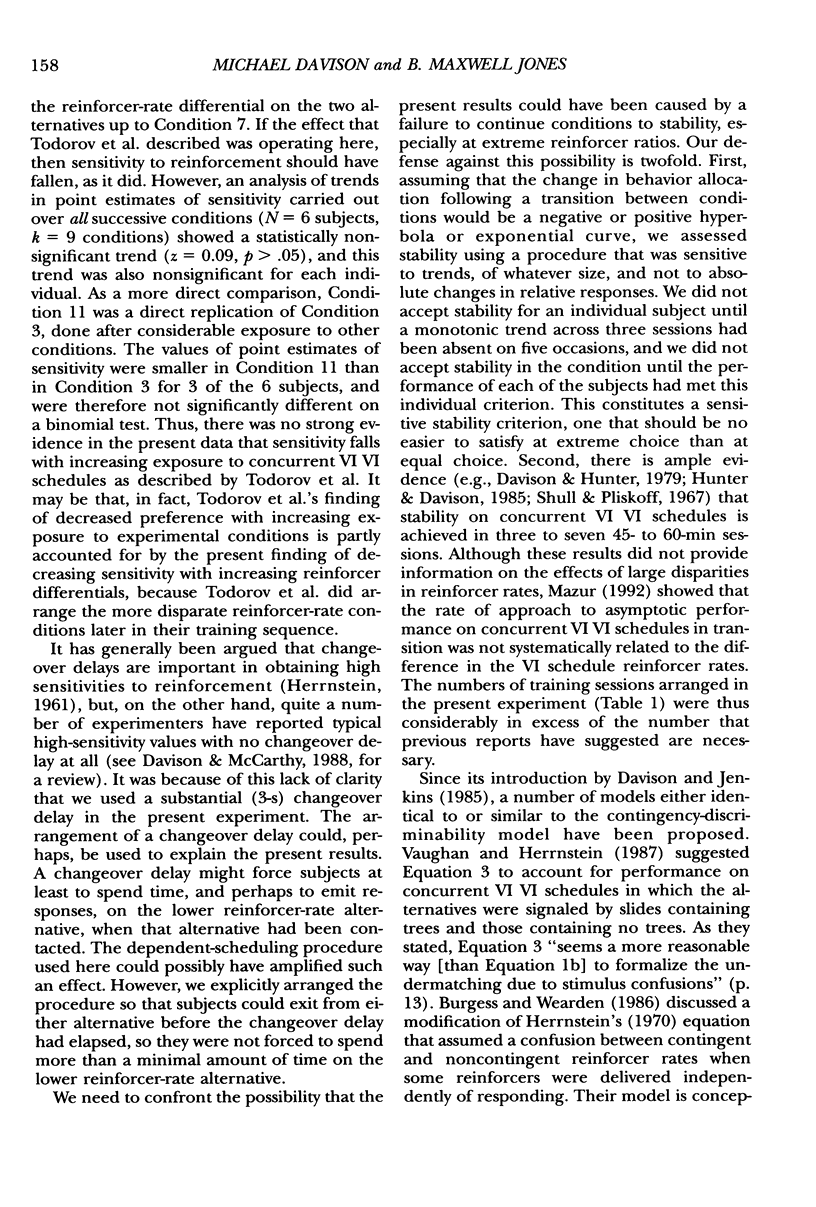
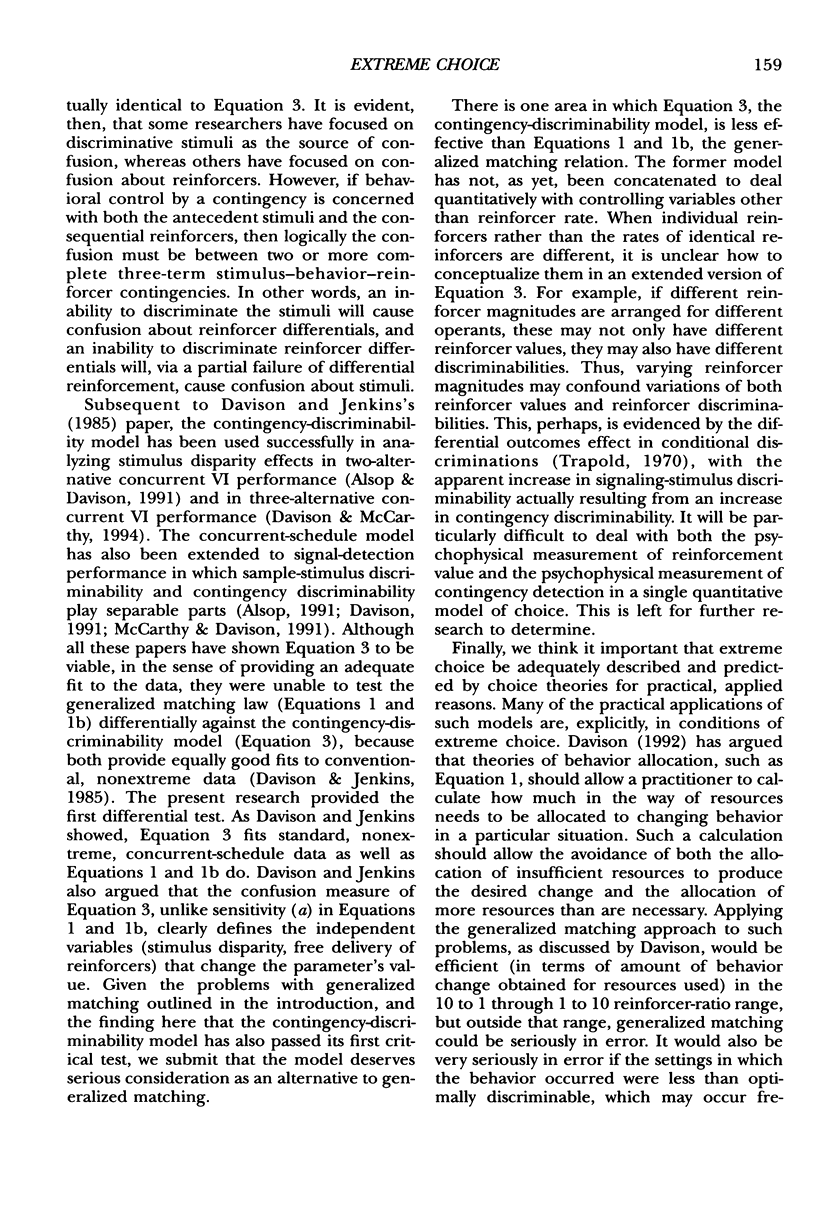
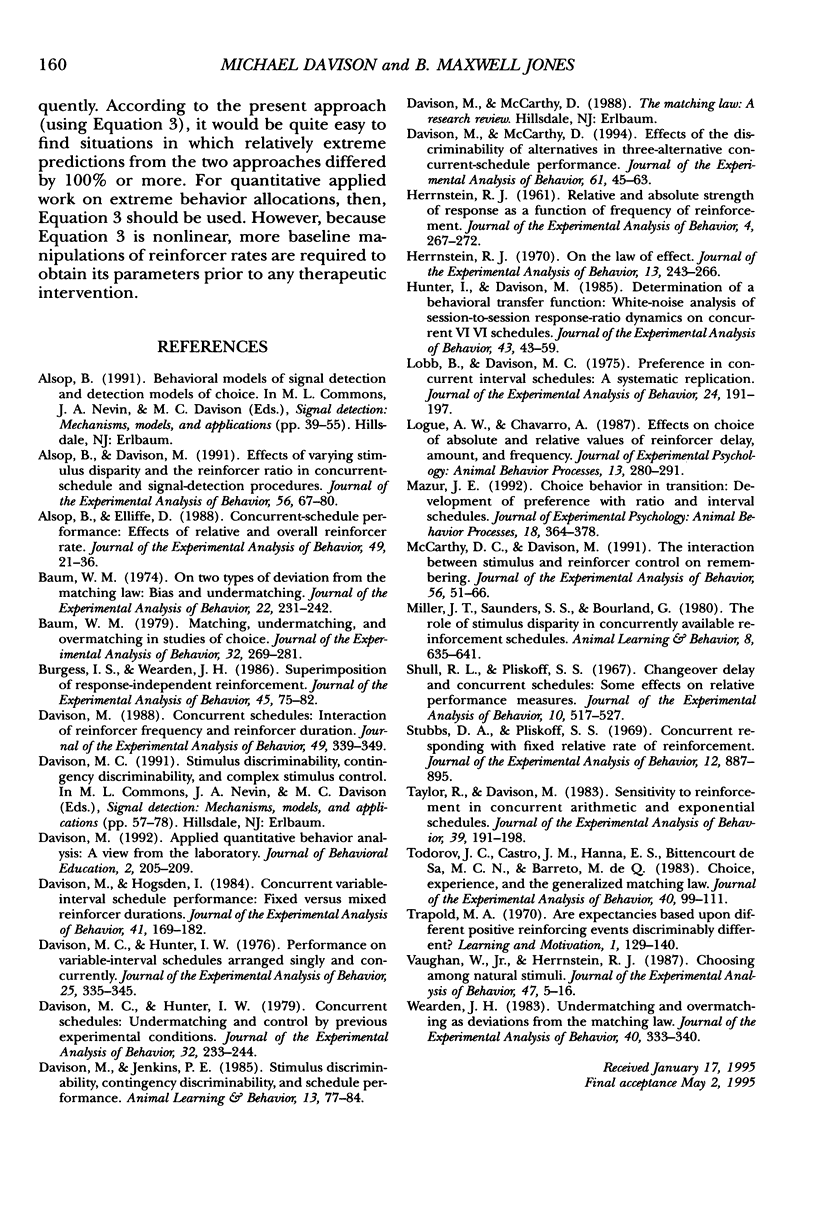
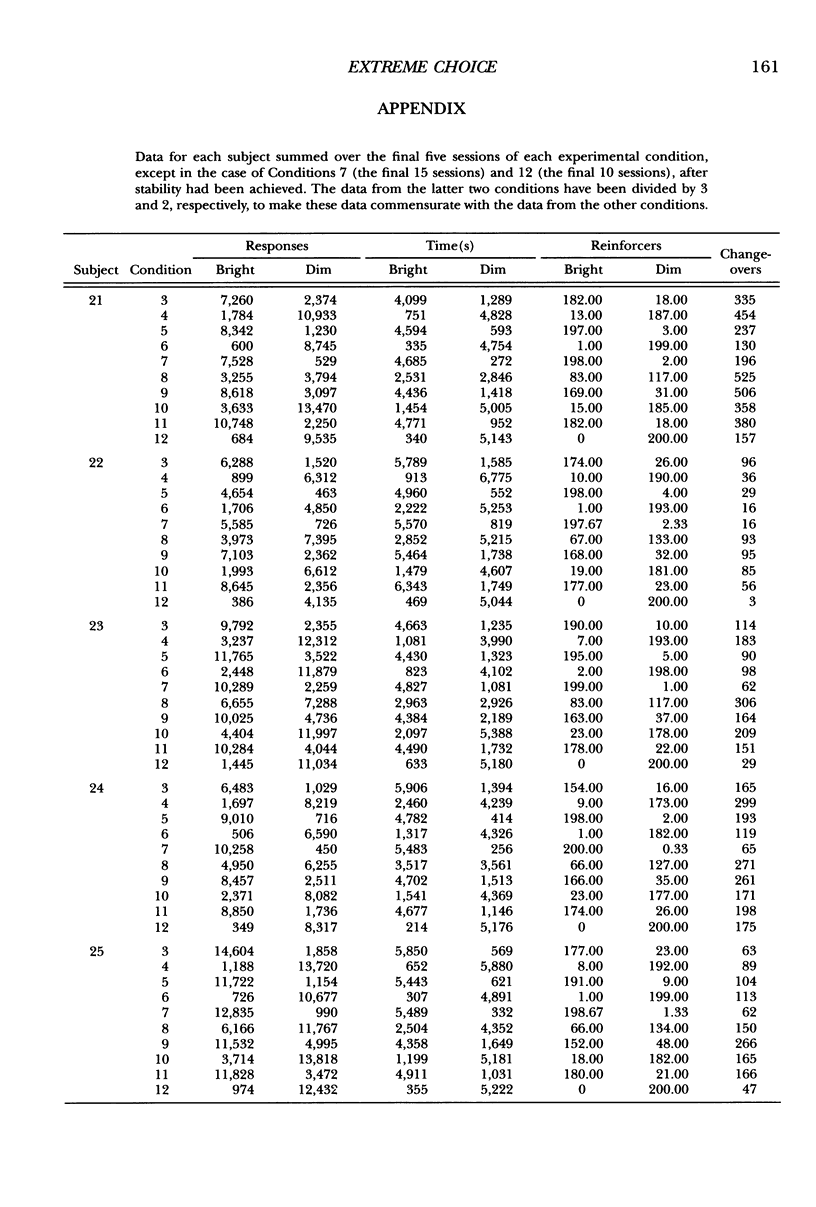
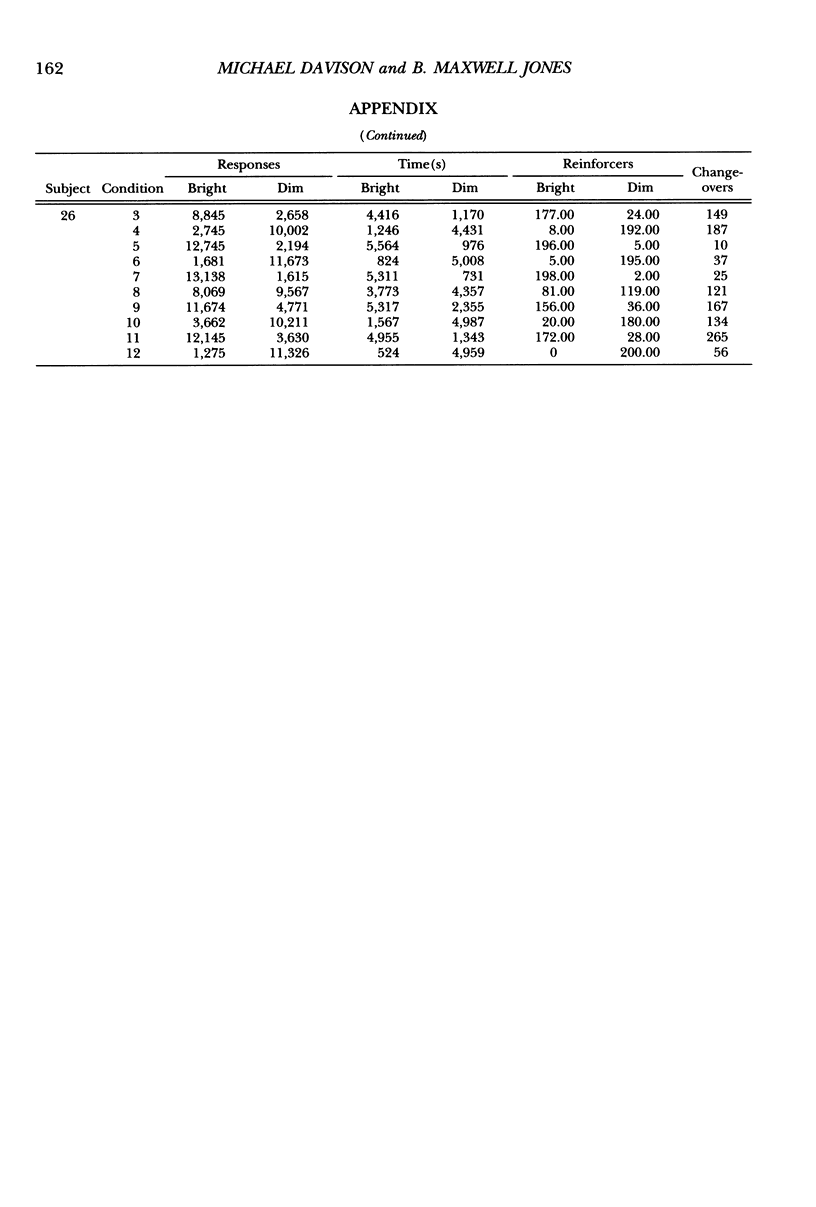
Selected References
These references are in PubMed. This may not be the complete list of references from this article.
- Alsop B., Davison M. Effects of varying stimulus disparity and the reinforcer ratio in concurrent-schedule and signal-detection procedures. J Exp Anal Behav. 1991 Jul;56(1):67–80. doi: 10.1901/jeab.1991.56-67. [DOI] [PMC free article] [PubMed] [Google Scholar]
- Alsop B., Elliffe D. Concurrent-schedule performance: Effects of relative and overall reinforcer rate. J Exp Anal Behav. 1988 Jan;49(1):21–36. doi: 10.1901/jeab.1988.49-21. [DOI] [PMC free article] [PubMed] [Google Scholar]
- Baum W. M. Matching, undermatching, and overmatching in studies of choice. J Exp Anal Behav. 1979 Sep;32(2):269–281. doi: 10.1901/jeab.1979.32-269. [DOI] [PMC free article] [PubMed] [Google Scholar]
- Baum W. M. On two types of deviation from the matching law: bias and undermatching. J Exp Anal Behav. 1974 Jul;22(1):231–242. doi: 10.1901/jeab.1974.22-231. [DOI] [PMC free article] [PubMed] [Google Scholar]
- Burgess I. S., Wearden J. H. Superimposition of response-independent reinforcement. J Exp Anal Behav. 1986 Jan;45(1):75–82. doi: 10.1901/jeab.1986.45-75. [DOI] [PMC free article] [PubMed] [Google Scholar]
- Davison M. C., Hunter I. W. Concurrent schedules: undermatching and control by previous experimental conditions. J Exp Anal Behav. 1979 Sep;32(2):233–244. doi: 10.1901/jeab.1979.32-233. [DOI] [PMC free article] [PubMed] [Google Scholar]
- Davison M. C., Hunter I. W. Performance on variable-interval schedules arranged singly and concurrently. J Exp Anal Behav. 1976 May;25(3):335–345. doi: 10.1901/jeab.1976.25-335. [DOI] [PMC free article] [PubMed] [Google Scholar]
- Davison M. Concurrent schedules: Interaction of reinforcer frequency and reinforcer duration. J Exp Anal Behav. 1988 May;49(3):339–349. doi: 10.1901/jeab.1988.49-339. [DOI] [PMC free article] [PubMed] [Google Scholar]
- Davison M., Hogsden I. Concurrent variable-interval schedule performance: Fixed versus mixed reinforcer durations. J Exp Anal Behav. 1984 Mar;41(2):169–182. doi: 10.1901/jeab.1984.41-169. [DOI] [PMC free article] [PubMed] [Google Scholar]
- Davison M., McCarthy D. Effects of the discriminability of alternatives in three-alternative concurrent-schedule performance. J Exp Anal Behav. 1994 Jan;61(1):45–63. doi: 10.1901/jeab.1994.61-45. [DOI] [PMC free article] [PubMed] [Google Scholar]
- HERRNSTEIN R. J. Relative and absolute strength of response as a function of frequency of reinforcement. J Exp Anal Behav. 1961 Jul;4:267–272. doi: 10.1901/jeab.1961.4-267. [DOI] [PMC free article] [PubMed] [Google Scholar]
- Herrnstein R. J. On the law of effect. J Exp Anal Behav. 1970 Mar;13(2):243–266. doi: 10.1901/jeab.1970.13-243. [DOI] [PMC free article] [PubMed] [Google Scholar]
- Hunter I., Davison M. Determination of a behavioral transfer function: White-noise analysis of session-to-session response-ratio dynamics on concurrent VI VI schedules. J Exp Anal Behav. 1985 Jan;43(1):43–59. doi: 10.1901/jeab.1985.43-43. [DOI] [PMC free article] [PubMed] [Google Scholar]
- Lobb B., Davison M. C. Performance in concurrent interval schedules: a systematic replication. J Exp Anal Behav. 1975 Sep;24(2):191–197. doi: 10.1901/jeab.1975.24-191. [DOI] [PMC free article] [PubMed] [Google Scholar]
- Mazur J. E. Choice behavior in transition: development of preference with ratio and interval schedules. J Exp Psychol Anim Behav Process. 1992 Oct;18(4):364–378. doi: 10.1037//0097-7403.18.4.364. [DOI] [PubMed] [Google Scholar]
- McCarthy D. C., Davison M. The interaction between stimulus and reinforcer control on remembering. J Exp Anal Behav. 1991 Jul;56(1):51–66. doi: 10.1901/jeab.1991.56-51. [DOI] [PMC free article] [PubMed] [Google Scholar]
- Shull R. L., Pliskoff S. S. Changeover delay and concurrent schedules: some effects on relative performance measures. J Exp Anal Behav. 1967 Nov;10(6):517–527. doi: 10.1901/jeab.1967.10-517. [DOI] [PMC free article] [PubMed] [Google Scholar]
- Stubbs D. A., Pliskoff S. S. Concurrent responding with fixed relative rate of reinforcement. J Exp Anal Behav. 1969 Nov;12(6):887–895. doi: 10.1901/jeab.1969.12-887. [DOI] [PMC free article] [PubMed] [Google Scholar]
- Taylor R., Davison M. Sensitivity to reinforcement in concurrent arithmetic and exponential schedules. J Exp Anal Behav. 1983 Jan;39(1):191–198. doi: 10.1901/jeab.1983.39-191. [DOI] [PMC free article] [PubMed] [Google Scholar]
- Todorov J. C., de Oliveira Castro J. M., Hanna E. S., Bittencourt de Sa M. C., Barreto M. Q. Choice, experience, and the generalized matching law. J Exp Anal Behav. 1983 Sep;40(2):99–111. doi: 10.1901/jeab.1983.40-99. [DOI] [PMC free article] [PubMed] [Google Scholar]
- Vaughan W., Herrnstein R. J. Choosing among natural stimuli. J Exp Anal Behav. 1987 Jan;47(1):5–16. doi: 10.1901/jeab.1987.47-5. [DOI] [PMC free article] [PubMed] [Google Scholar]
- Wearden J. H. Undermatching and overmatching as deviations from the matching law. J Exp Anal Behav. 1983 Nov;40(3):333–340. doi: 10.1901/jeab.1983.40-333. [DOI] [PMC free article] [PubMed] [Google Scholar]


